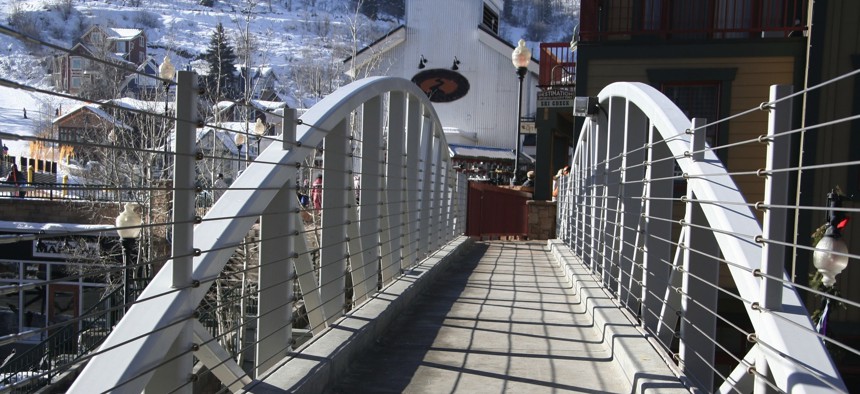This Utah Ski Town Drives Record Citizen Engagement With Its Water Portal

Park City, Utah Leshik / Shutterstock.com
Park City’s solution is catching on, even in cities not wrestling with drought-driven water conservation challenges.
Confronted by residents upset over large water bills, members of the City Council in Park City, Utah, asked the municipal Water Department in 2008 to start actively notifying customers when leaks were suspected.
The problem was that reading water meters and creating bills took time, so the city upgraded all its customers to an advanced metering infrastructure (AMI) system between 2010 and 2012.
Despite the remote radio meter readings, Park City wasn’t prepared for the amount of data coming in and still struggled to quickly analyze it and notify customers of leaks.
“Initially we wanted to develop our own customer portal to push data to them but then we took a look at WaterSmart, and the fact you could automate leak notifications was a big ... saver for us,” said Jason Christensen, the city’s water resources manager. “Because of recurring nudges to their customer portal, WaterSmart has a higher utilization rate than any other solution we looked at.”
Since going with San Francisco-based WaterSmart Software in 2013, the city has provided hourly water use data to customers. High-volume leak notifications are immediately sent if a single-family residence uses 80 gallons per hour over 24 hours, and low-volume leak notifications sent if 1 gallon per hour is used over a week’s time.
More than 150 leaks were detected in the first three months of using the company’s software, 70 percent of which were closed within 10 days after notification.
“Citizens have a right to expect dependability from utilities in particular, and we saw this in Park City,” Robin Gilthorpe, WaterSmart’s CEO, said in an interview. “They identified a need for a solution and considered if they should build it themselves, before we demonstrated the ability to meet their need rapidly.”
Perhaps because it’s a beautiful place that draws millions of tourists between its ski resorts and the Sundance Film Festival, he said, city residents seem to see more value in sustainability than most. Whatever the case, Park City boasts the highest utilization rate of any WaterSmart client with more than 30 percent of its population using the portal.
Utah set the goal of reducing water use by 25 percent by 2025 using 2000 usage levels as a baseline, and the city is on track to meet that objective.
More useful to customers, many who have second homes in Park City, quickly identifying bigger leaks from, say, toilets can prevent substantial property damage—a net positive interaction with the government that used to only stick sufferers with the bill.
Home water reports are customized reminders to households with cost suggestions, and soon customers will be able to set alerts when their water use exceeds their desired budget.
“Even if they don’t take action, it’s hard for a person to say now we’re not trying to help reduce water use. It’s been a very positive response in the community,” Christensen said. “Soon each home can set a threshold based on what they think they should be using at any point time.”
Most leaks occur during the freeze-thaw months, and the desire for notifications isn’t limited to areas experiencing drought. WaterSmart diversified its clientele in 2015, Gilthorpe said, adding coastal, inland, low-income and high-income cities.
Outside of measuring conservation efforts, the platform addresses issues around stormwater and allows for targeted communications to low-lying homes.
“It’s not about drought; it’s about population growth and mobilization,” Gilthorpe said. “The lure of large numbers starts to work when you’re using these kinds of behavioral techniques, and it’s always worth emphasizing long-term structural issues with global impacts.”
Dave Nyczepir is a News Editor at Government Executive’s Route Fifty.
NEXT STORY: The Story Behind How the Laquan McDonald Shooting Video Was Released






